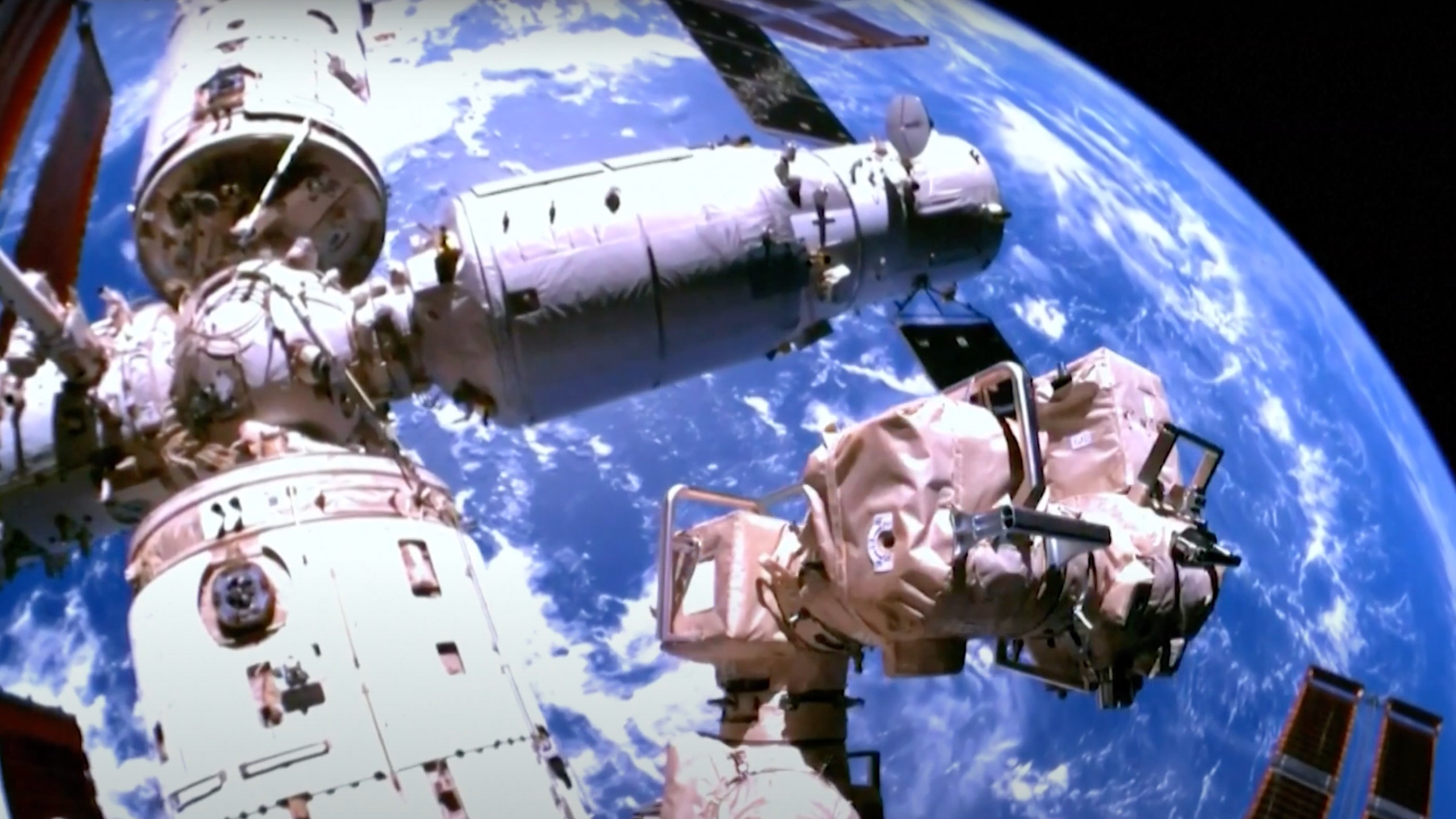1,000 days in space! Core module of China's Tiangong space station hits milestone
Tianhe is the hub for China's grand plans in low Earth orbit.

The core module of China's Tiangong space station has passed the milestone of 1,000 days in low Earth orbit.
China launched the 54-foot-long (16.6 meters) module — named Tianhe, or "Harmony of the Heavens" — on a Long March 5B rocket on April 29, 2021, marking the start of construction of the three-module Tiangong space station.
Tianhe reached 1,000 days in orbit on Jan. 24. Its docking hub allowed the arrival of the Wentian and Mengtian science modules to join with Tianhe in orbit in 2022 and complete the T-shaped Tiangong.
Related: The latest news about China's space program
The landmark highlights the technological and engineering capabilities of China's space industry, which has greatly expanded its activities in recent years.
China aims to keep Tiangong operating for at least a decade. Starting with Shenzhou 12 in 2021, six crewed missions have visited Tianhe and been kept comfortable by its life support systems and sleeping quarters. The current occupants are the Shenzhou 17 crew, who are just over halfway through their six-month-long mission aboard Tiangong.
A video released by China's human spaceflight agency to mark the milestone shows clips of the launch, views of Earth from orbit, the interior of Tianhe, including working and personal areas, various Shenzhou mission astronauts at work, and a microgravity science laboratory cabinet.
Breaking space news, the latest updates on rocket launches, skywatching events and more!
Tiangong is just 20% as massive as the 460-ton International Space Station (ISS), but its presence provides another human outpost for science in orbit. Tiangong also contributed to a new record of 17 people in orbit at one time, set in May 2023.
China is, however, planning to expand Tiangong beyond its basic, three-module configuration with further modules.
Tiangong may also have an impact on how China's space activities are perceived, according to a report, with potential commercial activities and civilian astronauts now allowed to travel to the orbital outpost, while formerly only air force pilots were considered for astronaut selection.
International experiments and astronauts are also expected to fly to Tiangong in the future. In 2025, China plans to launch a space telescope to co-orbit with Tiangong. It will be able to dock with the space station for repairs, refueling and potentially even upgrades.
"Xuntian,” which can be literally translated as "surveying the sky," will have a similar spatial resolution as the venerable Hubble Space Telescope, but feature a field of view more than 300 times larger.
Join our Space Forums to keep talking space on the latest missions, night sky and more! And if you have a news tip, correction or comment, let us know at: community@space.com.

Andrew is a freelance space journalist with a focus on reporting on China's rapidly growing space sector. He began writing for Space.com in 2019 and writes for SpaceNews, IEEE Spectrum, National Geographic, Sky & Telescope, New Scientist and others. Andrew first caught the space bug when, as a youngster, he saw Voyager images of other worlds in our solar system for the first time. Away from space, Andrew enjoys trail running in the forests of Finland. You can follow him on Twitter @AJ_FI.
